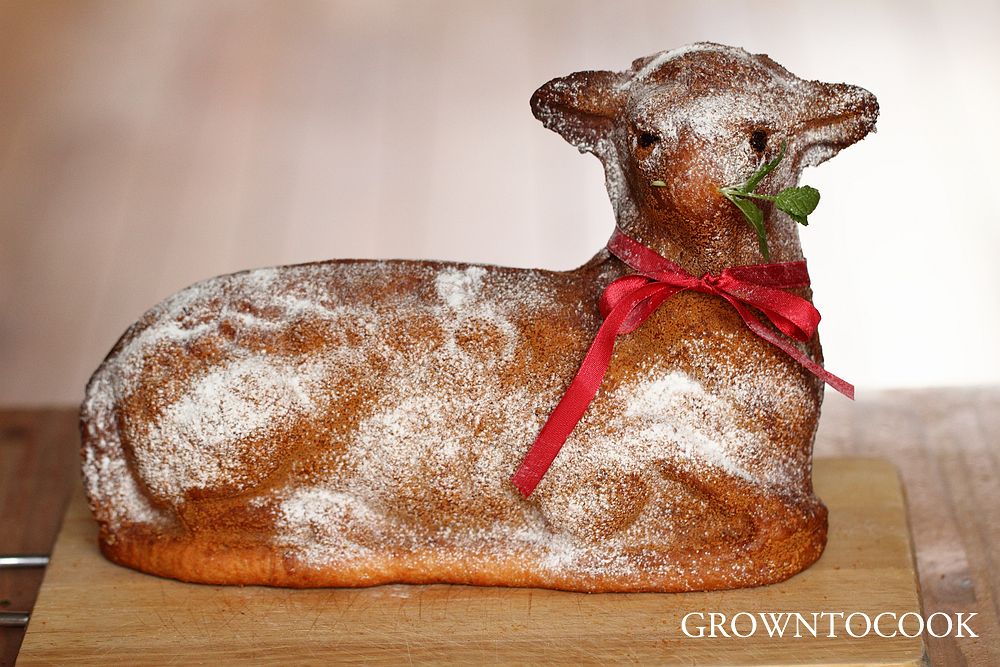
Even though the way we celebrate Easter and the dishes we serve for our Easter brunch vary a bit from year to year, there are two food related Easter traditions we always keep. On Saturday we will decorate eggs (with bees wax and food colouring) and I will bake a lamb. Yes, I’m still a vegetarian. Which means the lamb in question will not be the meaty kind, but a cake. In the past, people who could not afford an actual lamb for Easter would bake one from dough. Me, I prefer the cake to an actual lamb. (When Esther was about two, she insisted on the cake being a dog which sounded even better to the uninitiated: “You eat dogs for Easter in the Czech Republic?!”)
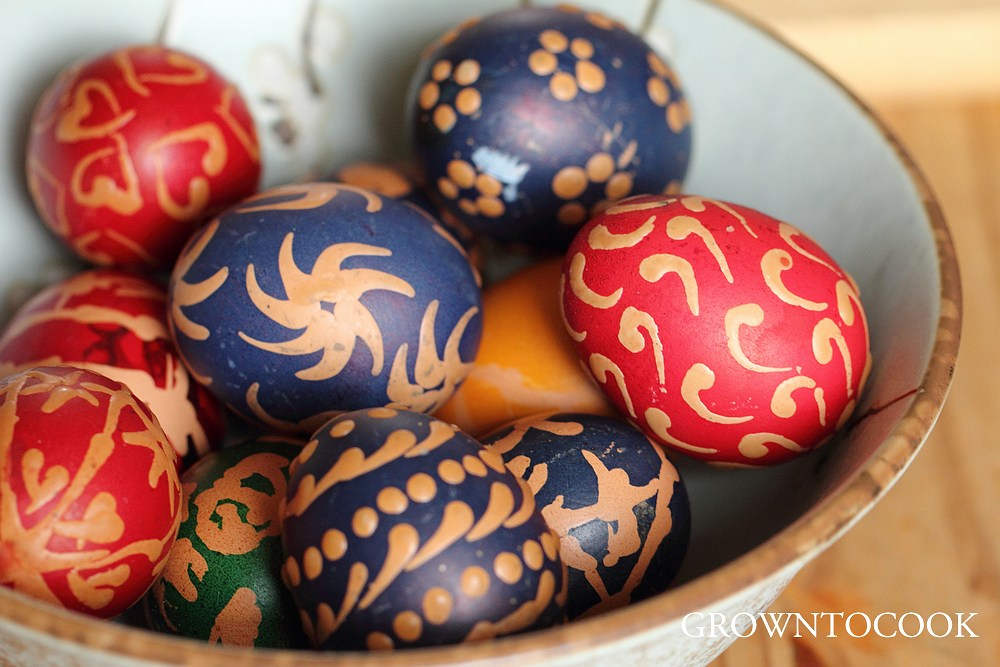
From my grandma I inherited a beautifully detailed (and heavy as hell) cast-iron enamelled Easter lamb cake mould. Unfortunately, it did not come with a recipe. And even though I remember my grandmother baking a mazanec each year for Easter, I do not have a recollection of her actually using this mould.
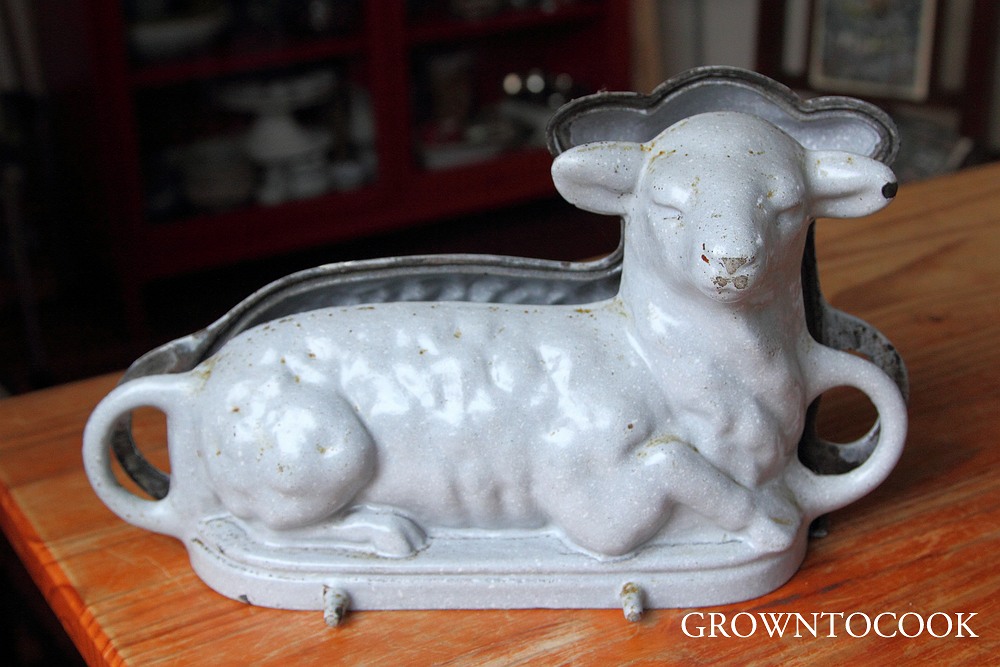
Which means, I had to turn to old cookbooks, websites and cooking magazines for a recipe. After having experimented with a few, I settled on this one (as I was bound to) : rich yeasted dough, from my father’s copy of the charming interbellum Czech cookbook “Kucharka Lady” (Lada’s cookbook). I have tried a cake batter with baking powder as a rising agent, too, but not only do I prefer the taste of the yeasted cake, it seems to fill the mould more reliably.
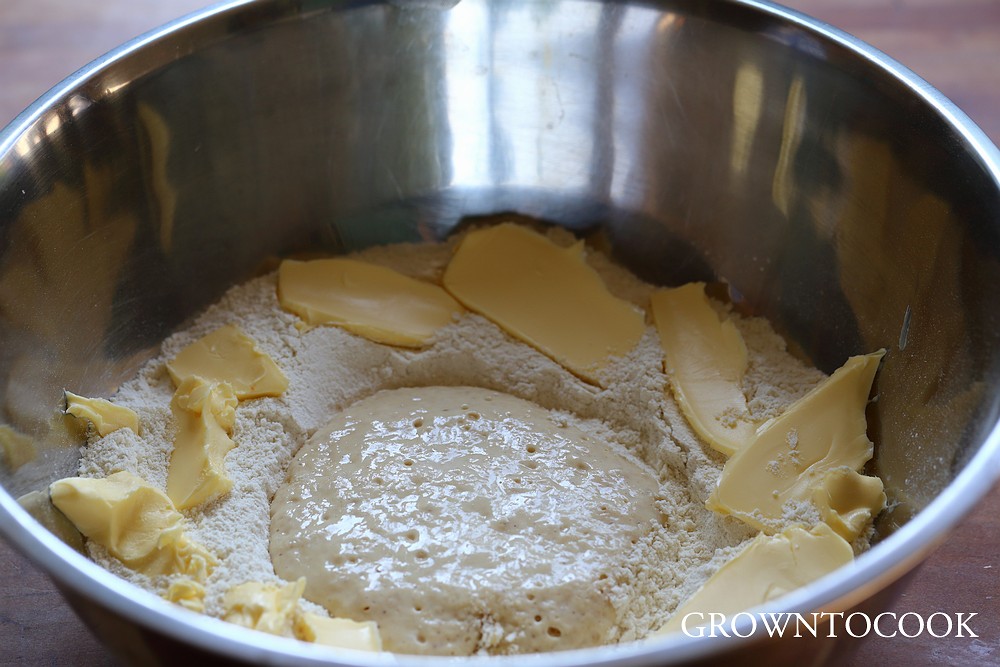
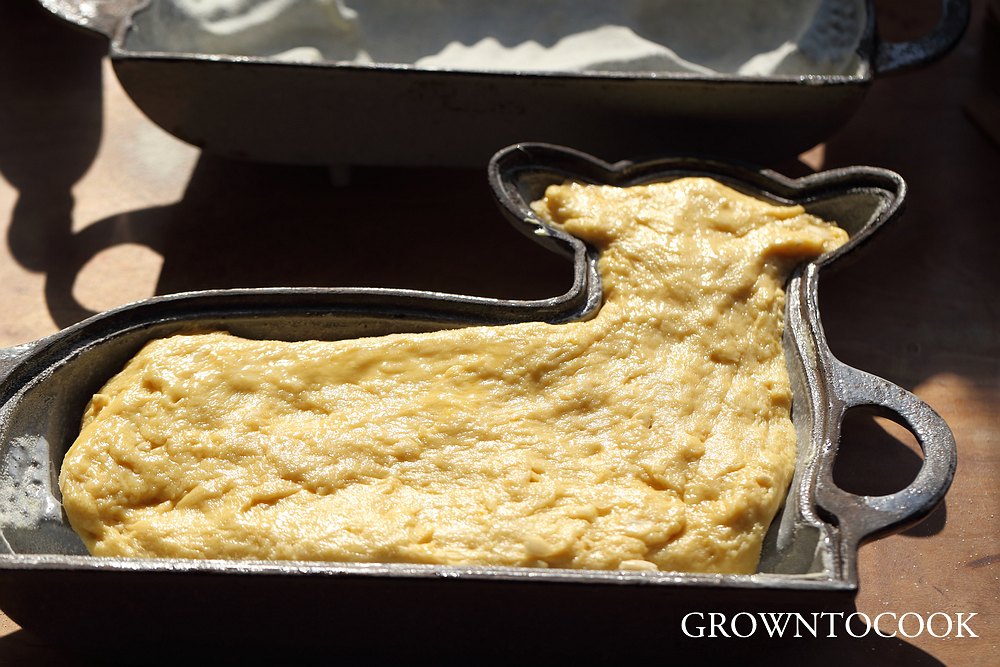
And since it is Easter, I am also willing to be as extravagant as using 4 yolks to make the dough extra luxurious (if you are a long time reader you might know something about my issue with using just half an egg for a recipe).
The mould I have is 22 cm (9 inches) tall and 30 cm (12 inches) long and the amount of dough fills it perfectly.If you have not inherited an Easter lamb cake mould, you could, of course, buy one. This one looks pretty similar to mine, even though it’s not cast-iron but aluminium: Large Lamb Cake Mold. Or you can bake the cake in a bundt form – less Eastery, but equally delicious.

In this post you can find plenty more Easter recipes, both sweet and savory, traditional and modern: Easter food.
Easter Lamb Cake
Adapted from A. Seidlova: Kucharka Lady
500g (3 ½ cup) all-purpose flour
½ tsp fine salt
½ tsp grated lemon zest
100 g (1/2 cup) sugar
250 ml (1 cup) milk
30 g fresh yeast or 3 tsp dry yeast
4 egg yolks
120 g ( 1 stick) butter
60 g (1/2 cup) roughly chopped blanched almonds
Melted butter
In a large bowl, mix flour, salt, lemon zest and sugar. Warm the milk to tepid temperature. Make a well in the flour mixture and pour in about half the warmed milk. Add the yeast and stir to dissolve it, adding a bit of the flour mixture while stirring. Put the butter in slices around the yeast mixture and cover the bowl (this will soften the butter so that it can be easily incorporated). Let sit for about 10 – 15 minutes, or until the yeast foams up. Meanwhile, stir the egg yolks into the remaining milk. When the yeast is activated, add the milk-yolks mixture and stir with a wooden spoon. When the dough becomes too difficult to stir, use your hands to knead the dough, either in the bowl, or on a well-floured surface. Wash the bowl, oil lightly and return the dough into it. Cover and let rise at room temperature until doubled in bulk, about one hour.
Preheat your oven to 180 degrees Celsius (360 F).
Grease the baking mould with butter or oil, being careful to get it into every nook or cranny. Dust with flour – I use semolina since this is what my recipe recommends and it sure makes it easy to get the cake out of the mould. Gently incorporate the almonds into the dough and distribute the dough well in the bottom half of the mould. Brush the top with melted butter. Let rise for another 30 – 45 minutes. Cover with the top half and put in the oven. After 30 minutes, rotate the mould 180 degrees and bake another 15 minutes. At this point you can lift the top of the mould to see how the lamb is baking. If it is well risen, but too pale, you can take off the top altogether. When ready, take the cake out of the oven, unmould and put it on a wooden board. Let cool. Dust with confectioner’s sugar, if you wish. Add raisins for the eyes and tie a nice ribbon around your lamb’s neck and give it a leaf to chew on (I use geranium or mint, since they are edible).
Best served the second day.
9 comments for “Easter Lamb Cake”